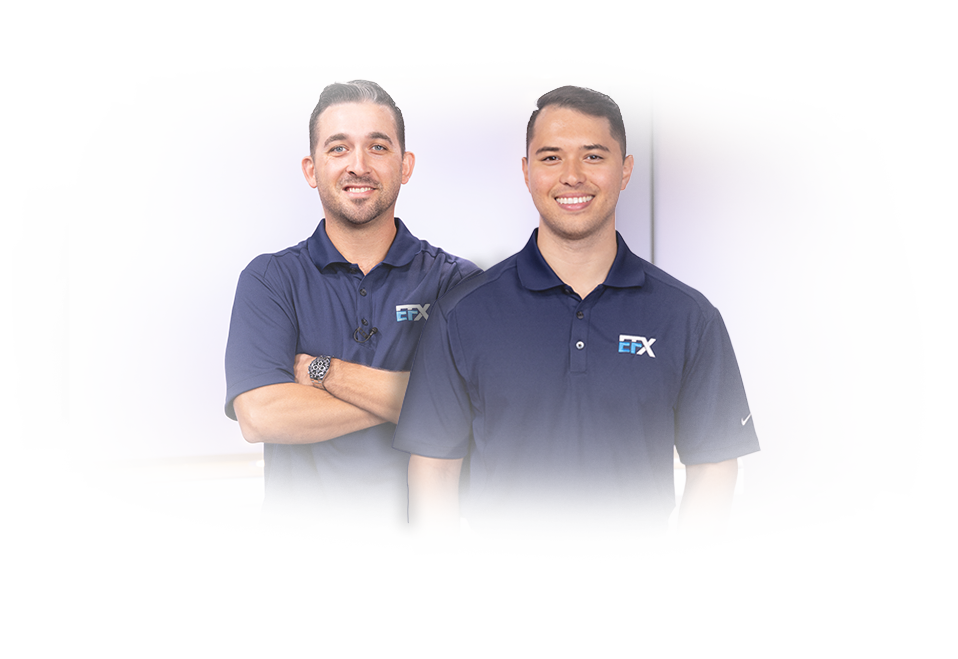Best Trading Platforms: EFX Algo Wins Top Media Awards





When people search for the best trading platforms, they’re really asking a bigger question. They want to know who has earned trust, who is showing consistent results, and who is being recognized by credible sources. That search goes beyond lists of features or glossy marketing. It comes down to a track record that others can verify, not just claims made by the platform itself.
EFX Algo has gained that kind of recognition with a fully automated, hands-off approach designed around transparency, risk management, and independent validation. The focus is on delivering measurable outcomes supported by third-party confirmations and real trader experiences. In short, the idea of “best” is more than technology alone—it’s the combination of proven performance, outside verification, and authentic user results that traders can rely on.

1. Why This Recognition Matters To Traders And Investors
Media recognition is a useful signal in a crowded market. It doesn’t replace diligence, but it does help you sort the noise. Coverage from outlets such as AP News, Yahoo Finance, and Markets Insider puts a spotlight on the claims and the context. That matters for two reasons. First, professional editors scrutinize language around performance, disclaimers, and risk. Second, broader visibility invites questions and accountability. The more eyes on a claim, the harder it is to overstate it.
Over the past year, EFX Algo’s automated software has been profiled as a 100% hands-off system that was first limited to a private education community and later opened to the public. The media coverage emphasized several facts that matter to traders: independent tracking via Myfxbook, tiered portfolio profiles to match risk preference, and a documented emphasis on capital preservation paired with monthly compounding rather than speculative bets [1][2][3]. In a segment where stories can feel slippery, these details anchor expectations to verifiable data flows.
2. How We Evaluate The Best Trading Platforms In 2025
“Best” is contextual. A credible evaluation blends objective criteria, third-party validation, and user outcomes. For 2025, the markers that stand out include:
- Independent verification. Live-account aggregation and performance visibility through third-party tools, highlighted in EFX Algo’s use of a Myfxbook-powered live tracker that updates on cadence and shows collective deposits and gains over time [6].
- Risk controls and transparency. Clear drawdown history, explanation of strategies, and portfolio choices that align with different risk appetites, as reported in coverage by Daily Scanner and ValiantCEO[6][7].
- Consistency over spectacle. Media features cite average monthly return ranges tied to conservative, moderate, and aggressive settings, paired with a money-back guarantee window for the license fee, signaling process control rather than hype [1][2].
- Real-user narratives. Case studies with dates, balances, and percentage gains give context to the numbers, including reports of ~20%+ in several months on individual accounts, alongside mention of drawdowns and platform support experience [7].
This is the short list many investors quietly use when separating marketing from method. A system that checks these boxes deserves a closer look.
3. EFX Algo Overview Key Differentiators And Proof Points
EFX Algo’s core differentiators show up repeatedly across independent articles, press wires, and interviews:
- Hands-off automation with tiered portfolios. Conservative, Moderate, and Aggressive modes are designed to align with different drawdown tolerances and return targets, which is particularly helpful for allocation planning and portfolio hedging [1][2].
- Third-party verified tracking. A live tracker pulls read-only data from Myfxbook to display aggregated deposits, realized gains, and account-level metrics without exposing personal identifiers. This approach raises the bar for transparency in automated trading [6].
- Structured onboarding and support. Coverage highlights 1-on-1 setup, access to a private community, and responsive assistance, which matters more than people realize. Strong support reduces misconfigurations and helps users stick to a plan during volatile periods [1][7].
- Refund window on the license fee. A 90-day money-back guarantee on the startup cost signals confidence in the product fit and the process required to run it properly [1][2].
Proof points in the public record include aggregate deposit growth reported at set points in time and month-to-date gains on the collective tracker, along with individual account examples showing low to mid single-digit average monthly gains, moderate drawdowns, and compounding over several months [6][7]. No automated system eliminates risk, and coverage has rightly noted that outcomes vary by settings and market conditions. What stands out is the consistent emphasis on verifiable, read-only data and documented risk management.
4.Media Recognition From AP News Yahoo Finance And Markets Insider
When AP News, Yahoo Finance, and Markets Insider publish a release, the value isn’t the headline alone. It’s the record of what was said and when. The February 19, 2024 announcements documented that EFX Algo’s hands-off bot—previously closed to a private education group—was opened to the public after extended testing, with reported monthly return ranges across risk tiers and a refund guarantee on licensing costs [1][2][3]. The messaging is careful on purpose. Explicit comparisons with long-run averages for stocks and retirement accounts were framed to underscore the different objective of an automated, risk-tiered approach, not to promise linear outperformance.
Follow-on coverage amplified the transparency angle. Markets Insider’s post preserved the same key points and directed readers to the primary site for more detail, while business features in outlets like US Times Now and Business News Ledger highlighted aggregate adoption metrics and the logic behind the move from private network to public access [4][5]. Put simply, there’s a paper trail.
5. Verified Results And Transparency With Myfxbook Live Tracker
Plenty of platforms talk about performance. Fewer point people to a third-party tracker that refreshes on a schedule and lets anyone sort anonymized accounts by balance, profits, and absolute gain. EFX Algo’s tracker, built around Myfxbook read-only integrations, does exactly that. Coverage walked through how the tracker shows collective deposits, month-to-date gains, and user-by-user profiles without exposing personal information [6]. Readers saw screenshots and filters in action, including examples where users slid profit thresholds or account balances to see peer outcomes in similar ranges.
The nuance matters. Equity curves show realized versus floating values. Drawdown records show the worst-to-date slump since activation, which helps calibrate expectations. And because the feed is read-only, there’s no temptation to “massage” numbers. In an industry where cherry-picking is far too common, this structure changes the conversation from claims to evidence.
6. Client Stories And Outcomes From ValiantCEO And Grit Daily
Real conversations have texture. In ValiantCEO’s case study, a user with a background in real estate described shifting part of a portfolio to EFX Algo and experiencing a roughly 20.5% increase over four months, paired with lower stress and strong support during onboarding [7]. That kind of anecdote doesn’t replace data, but it does show how people weigh outcomes beyond a percentage figure. Less screen time. Fewer reactive trades. A plan they can explain to a spouse.
Grit Daily’s feature on co-founder Danny Reardon digs into the origin story and the decision to privilege capital preservation with diversified strategies and monthly compounding over headline-chasing swings [8]. The thread through both pieces is practical: people care about returns, but they also care about predictability, drawdowns, and whether support actually answers when questions pop up on a Tuesday morning.
7. How EFX Algo Compares To Top Trading Platforms In The US
Comparisons help you map where an automated, hands-off system fits among household-name brokerages and active trading suites. They serve different needs. Brokerages like Fidelity or Interactive Brokers anchor self-directed access to stocks, ETFs, options, futures, and global markets. EFX Algo functions as an automated strategy layer focused on hands-off execution and verification. Many investors pair a brokerage account for discretionary trades with an automated allocation for compounding and diversification.
Fidelity Investments highlights for investors
Fidelity is consistently cited for $0 stock and ETF commissions, fractional shares, a deep research library, and multiple platforms including Active Trader Pro. It’s frequently ranked Best Overall or Best for ETFs in independent reviews, and is known for not routing equity orders for payment for order flow, which many investors view as a quality execution signal editor-verified. Fidelity’s educational hub and account breadth make it a strong core for long-term investors and active learners.
Interactive Brokers tools and global access
Interactive Brokers serves advanced traders with Trader Workstation, IBKR Desktop, and a broad set of APIs. Coverage highlights 160+ markets, complex order types, options analytics, and professional-grade scanners, along with mobile and web platforms suited to both beginners and pros. It’s a fit when you need international market access, algorithmic routing, and multi-asset depth in one place.
E*TRADE and Robinhood mobile and crypto support
E*TRADE and mobile-first platforms are recognized for approachable design and strong mobile experiences. While direct crypto access varies by broker, consumer-facing coverage has noted Robinhood’s large list of supported assets for crypto trading and simple app design editor-verified. These platforms are often a first stop for new investors, with quick on-ramps and clear workflows.
8. Fees Licensing And Commission Considerations For Traders
Understanding the economic model is non-negotiable. EFX Algo uses a licensing structure that includes a bot license, setup support, community access, and ongoing operating fees scaled to account size, paired with a 90-day money-back guarantee on the startup cost if the fit isn’t right [1][2]. That model is different from a broker charging commissions per trade or a fund charging a management fee. It aligns the expense with the software’s function and the capital it manages.
By contrast, brokerages generally monetize via interest on cash balances, securities lending, margin, and order flow or commissions depending on the venue and asset. This isn’t good or bad on its own. It just means you should match the tool to the job. If you want automated, tiered risk execution with verifiable aggregation, you license software. If you want self-directed trades, you open a brokerage account and consider margin rates, data packages, and routing.
9. Mobile And Desktop Access App iOS Android And Tablet
Platform access affects consistency. Brokerages like Fidelity and Interactive Brokers provide desktop platforms and mobile apps for on-the-go monitoring and order entry, while EFX Algo emphasizes a hands-off posture with web-based dashboards and read-only trackers highlighted across media coverage [6]. The practical takeaway is simple. Use mobile to check status, not to tinker. Automation works best when settings are stable and risk parameters aren’t tweaked every other session.
A brief scenario many will recognize. A user checks the live tracker over coffee, sees the orange equity line and red realized line moving in tandem, then moves on with the day. No notifications pinging at odd hours, no decision fatigue from chart watching. That sense of calm isn’t soft value. It’s often the difference between compounding and churn.
10. International Perspective Best Trading Platforms Europe
For readers in Europe, the “best trading platforms” discussion often includes names that specialize in regional access and pricing. The big themes are similar: transparent fees, strong mobile, and a balance between self-directed trading and automated strategies.
DEGIRO and European brokers to know
Brokerages such as DEGIRO are frequently cited in European roundups for broad market access and competitive pricing for EU residents editor-verified. The common thread mirrors the US: clarity on fees, tools that match your style, and guardrails against impulsive overtrading.
Saxo Bank and SaxoTrader Pro overview
Saxo Bank’s SaxoTrader Pro is well known among European active traders for advanced features and multi-asset access editor-verified. It leans toward those who want deep charting, options analytics, and a desktop suite that handles complex workflows.
eToro and social trading features
eToro’s copy-trading model is often discussed for its social layer, enabling users to mirror selected strategies. As US and EU coverage notes, social signals can educate, but they also tempt overconfidence. Risk settings and position sizing still do the heavy lifting editor-verified.
FAQs
Who has the best trading platform?
Best” depends on use case. For brokerages, Fidelity is widely praised for low costs, research depth, and platform quality, while Interactive Brokers stands out for global access and advanced tools. For hands-off automation with third-party verification, EFX Algo’s Myfxbook-integrated live tracker and risk-tiered portfolios are the distinctive features cited in current media coverage [1][6].
Is $100 a day good for day trading?
It depends on capital, strategy, and risk. Guidance from trading education sources suggests that daily targets should be tied to risk-adjusted returns and drawdown tolerance. Automation reframes the question around monthly compounding and consistency rather than fixed daily targets editor-verified.
Can you make $1000 in a day from stocks?
It’s possible with sufficient capital and volatility, but the risk is proportional. Coverage of day-trading goals often highlights that consistent smaller gains with controlled drawdowns tend to compound better than sporadic large wins with deep slumps editor-verified.
What is the 7% rule in stock trading?
The 7% rule is a risk control where a position is exited if it falls 7% below the purchase price. It’s often implemented with a stop-loss. Some experts caution that rigid stops can trigger premature exits; the right approach depends on timeframe, volatility, and strategy [9].
How To Get Started With EFX Algo And Learn More
Two practical steps. First, read the primary coverage to understand the model. The AP News release, Yahoo Finance post, and Markets Insider page align on the basics: automated execution, risk-tiered portfolios, Myfxbook-based verification, and a refund window on the license fee [1][2][3]. Second, review a walkthrough of the live tracker so you can interpret realized gains, equity lines, and drawdown snapshots in context [6]. If the approach fits your plan, set expectations in months and years, not days and weeks.
Summary takeaway. The best trading platforms blend access, tools, and trust signals. EFX Algo earned recognition by aligning hands-off automation with public, read-only verification and user-centered support. Next step. Use the linked sources below to validate the details that matter to you, and if automation is part of your strategy mix, consider starting with a conservative profile and scaling intentionally as the data supports it.
References
- AP News. EFX Algo Announces Its Proprietary, Industry-Disruptive Automated Trading Software is Now Open to The Public. February 19, 2024. Link.
- Yahoo Finance. EFX Algo Announces Its Proprietary, Industry-Disruptive Automated Trading Software is Now Open to The Public. February 19, 2024. Link.
- Markets Insider. EFX Algo Announces Its Proprietary, Industry-Disruptive Automated Trading Software is Now Open to The Public. February 19, 2024. Link.
- US Times Now. Revolutionizing Trading with Automation: The Success Story of EFX Algo. May 1, 2024. Link.
- Business News Ledger. From Exclusive to Empowered: EFX Algo’s Journey to Public Access Trading. February 26, 2024. Link.
- Daily Scanner. EFX Algo: Revolutionizing the Automated Trading Space with Verified Results: Here’s How. April 4, 2024. Link.
- ValiantCEO. Hands-Free Investing Case Study: The EFX Algo Difference. 2024. Link.
- Grit Daily. Co-Founder Danny Reardon: The Visionary Behind EFX Algo’s Automated Trading Revolution. February 6, 2024. Link.
- Akron Legal News. The 7% rule in stock trading and stop-loss implementation. 2024–2025 coverage. Link.



Take Your Trading to the Next Level with EFX Algo
Smarter Execution, Data-Driven Decisions, and Full Control Over Your Strategy.
